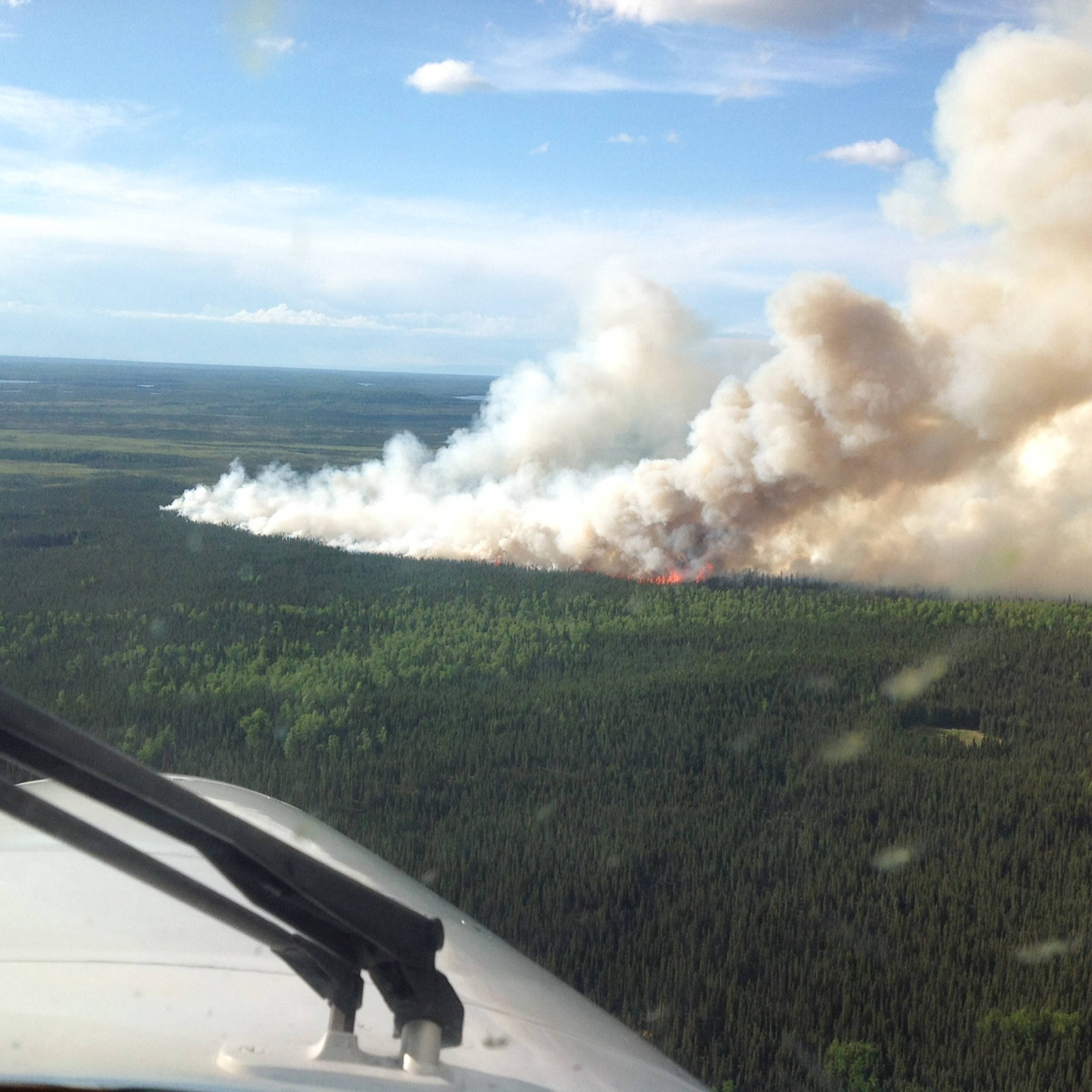Firefighters are scaling back their work on the East Fork wildland fire burning in the Kenai National Wildlife Refuge as it is not posing any threats, though they will continue to monitor its activity.
Sparked on June 15 by a lightning strike, the blaze is still reported at 1,016 acres in a limited suppression zone of the refuge near Sterling, about 4.5 miles north of the Sterling Highway. The Alaska Division of Forestry has been responding and containing the fire in conjunction with the U.S. Fish and Wildlife Service.
Firefighters have focused on the western and southern borders of the blaze to ensure it doesn’t encroach on the Sterling community or toward the highway. At this point, the East Fork fire has been transitioned to a Type 4 Incident, according to a release posted to the Alaska Wildland Fire Information website. Alaska Division of Forestry Public Information Officer Celeste Prescott said this means the fire has been reclassified as less intense based on its activity.
Complexity analyses are performed on fire incidents throughout their duration, Prescott said. Fires are classified from Type 1, being the most intense or dangerous, to Type 5, the equivalent of an escaped campfire. The East Fork fire began as a Type 3 incident, and now that’s it’s been classified at Type 4, the personnel assigned have been reduced to about 27, she said.
“Although parts of the Kenai Peninsula are receiving significant amounts of rain, the fire area is in a rain shadow, therefore is not expected to receive much rain over the next few days,” the release states. “Fires burning in deep duff and tundra require significant amounts of rain to put them completely out. Therefore, fire activity will likely increase once again when warmer and drier weather returns to the area.”
Crews are still doing a bit more work on the ENSTAR natural gas line easement that’s serving as a fuel break, along with another fuel break that was created from the fire’s southwest corner about 2 1/2 miles south to the pipeline. As fire activity picked up a bit on Tuesday, Prescott said firefighters actually got closer to the fire’s perimeter and are moving around the blaze as needed.
The plan to burn a stand of black spruce between the fire and the highway will only be implemented if the blaze picks back up, Prescott said, and the surrounding residents would get at least 24 hours notice.
“It’s really a strategy or a tactic we have potential to use if the fire becomes a threat, and at this point it’s not threatening the community,” she said.
There is still one helicopter on hand for personnel to fly over and monitor the fire, and to provide food, water and other resources to the firefighters still on the ground, Prescott said. The temporary flight restriction for the area above the wildland fire has been lifted, she said.
Personnel still assigned to the fire will likely reassess their plan after four to five days of monitoring, Prescott said.

